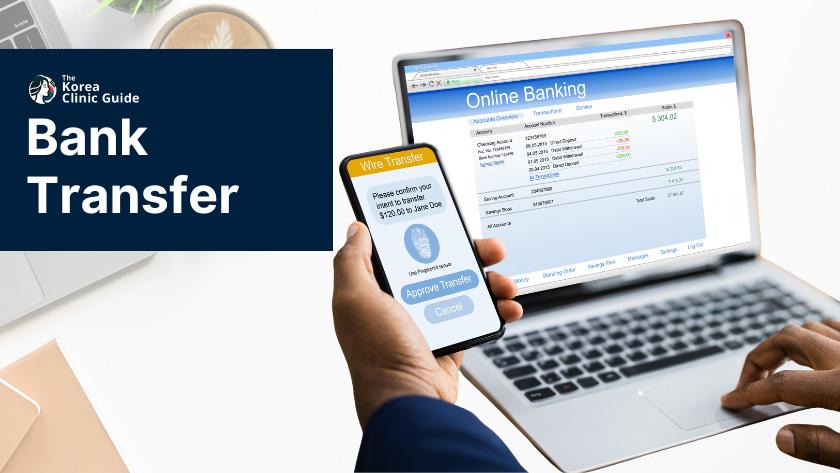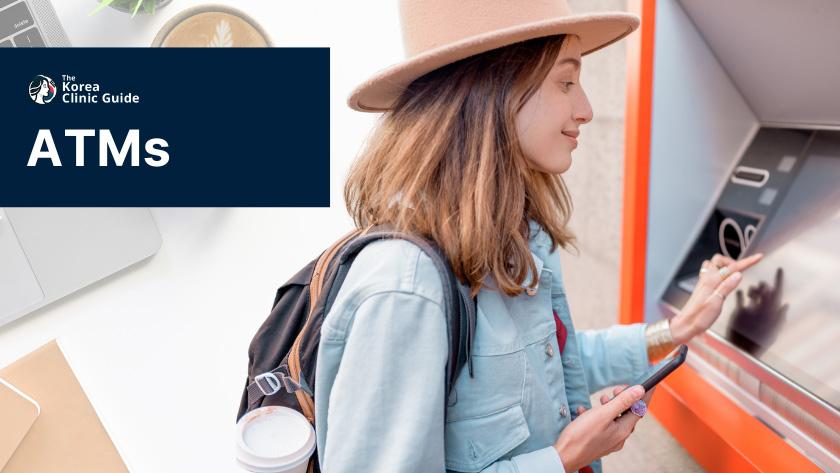Medical Tourism Blog
Complete Guide to Paying for Medical Care in Korea (Medical Tourism, 2025)

Table of contents
- At a glance
- Quick comparison table
- Payment methods, explained
- Step‑by‑step: Paying for care with confidence
- Cost‑saving & safety tips
- Troubleshooting common issues
- Template: Email your clinic to confirm payment details
- FAQ
- One‑page checklist (print or save)
Considering treatment in Korea? Everything you need to know e.g. — how to avoid scams, visas, interpreters, recovery tips — in our Medical Tourism Master Guide. Plan with confidence in minutes, not weeks!
Updated: September 16, 2025 — Written for international patients planning treatment in Korea.
Korea is one of the world’s most popular destinations for cosmetic, dental, orthopedic, fertility, and general medical care. Paying for care is usually straightforward—a little preparation goes a long way. This guide explains every practical way to pay (bank transfers, cards, digital wallets, cash, and ATMs), plus what to do before you fly, at the clinic, and if something goes wrong. Because medical bills and deposits can be large—often tens of thousands of dollars and sometimes exceeding US$50,000—confirm your payment options and any bank/card limits in advance to avoid delays.
At a glance
- Best for deposits & large bills: International bank transfer (send ~1 week before your procedure; allow 3–5 business days for arrival; expect fees).
- Best all‑around: Visa/Mastercard credit or debit. Amex/UnionPay accepted at some clinics and hotels—confirm in advance.
- Day‑to‑day spending: Cards work widely; keep some KRW cash as a backup.
- Digital wallets: KakaoPay, Naver Pay, Toss are ubiquitous locally but typically require a Korean bank account. Apple Pay coverage is growing but not universal.
- ATMs: Use Global ATM/Global Service ATM machines (in convenience stores, subway stations, banks). Withdraw in KRW and avoid DCC (paying in your home currency at a poor rate). *DCC = Dynamic Currency Conversion. Always choose to be charged in KRW when paying or withdrawing.
- Bring two payment methods (e.g., card + cash or card + transfer option) to avoid disruptions.
Quick comparison table
| Payment Method | Best Use Case | What to Know | Tips for Patients |
|---|---|---|---|
| Bank Transfer | Large deposits or full bills | Fees apply; 3–5 business days typical; send ~1 week in advance | Confirm transfer limits; include invoice/memo; keep SWIFT receipt |
| Credit/Debit Card | Most clinic & hotel payments | Visa/Mastercard widely accepted; Amex/UnionPay sometimes | Notify bank; enable international usage; raise daily limit; pay in KRW |
| Digital Wallets | Everyday spend for residents | KakaoPay/Naver Pay/Toss need Korean bank acct; Apple Pay not universal | Carry a physical card; don’t rely solely on wallets |
| Cash (KRW) | Small purchases & backup | Exchange at banks/airport/money changers; better rates often downtown | Carry moderate amounts; keep exchange receipts |
| ATMs | Access KRW on arrival | Use Global ATM; foreign cards supported | Avoid DCC; typical limits ₩1M/txn, ₩6M/day (home bank may cap lower) |
| Traveler’s Cheques | Not recommended | Rarely accepted, hard to cash | Bring cards/transfer/cash instead |
Payment methods, explained
1) Bank transfers (international wires)

Many clinics accept international wire transfers, especially for deposits or large invoices. Transfers generally arrive in 3–5 working days (longer around holidays or if intermediary banks are involved). To be safe, initiate payment at least one week before your procedure.
Before you send:
- Check your bank’s daily/monthly international transfer limits so your deposit won’t hit a cap.
- Ask about foreign transaction fees: Most banks charge 1–3% extra for international card use on both sides (your bank + receiving bank/intermediaries). Knowing this in advance avoids surprises.
- Ask your bank and the clinic for full beneficiary details and a clear invoice number/memo.
Pro tip: For time‑sensitive balances due on surgery day, combine a bank transfer for the bulk with a card as backup.
2) Credit & debit cards

Visa and Mastercard are widely accepted across Korean clinics, hospitals, hotels, and shopping venues. American Express and UnionPay may also be accepted at some locations, but it’s best to confirm in advance.
Do this before you travel:
- Notify your bank (or set travel plans in the app) to prevent fraud‑related declines.
- Ensure international usage is enabled—some banks block overseas transactions by default. Contact your bank to lift restrictions for Korea.
- Verify/raise your daily spending limit (international limits may be lower than domestic).
- Prefer chip (EMV) cards for smoother acceptance.
At the terminal:
- If offered, decline DCC and choose KRW.
- Keep the itemized receipt for insurance or reimbursements.
3) Digital payments (Apple Pay & local wallets)

Korea is rapidly moving toward a cashless experience.
- Local wallets: KakaoPay, Naver Pay, Toss are widely used by residents for in‑store and online payments, but they typically require a Korean bank account, so they’re not ideal for short‑term visitors.
- Apple Pay: Availability is expanding but still not universal; acceptance varies by chain and merchant. Always carry a physical card as backup.
4) Cash in Korea (KRW)
.jpg&w=1920&q=75)
While many places accept cards, carrying some Korean Won (₩) is smart for small purchases (taxis, cafés, convenience stores) and as emergency backup.
Where to exchange:
- Banks, airports, and authorized money changers.
- Downtown exchange areas (e.g., Myeongdong, Itaewon) often have better rates than airports.
- Major currencies like USD, EUR, JPY, CNY are easy to exchange.
Good to know:
- Some clinics (especially when working with agencies) may accept USD/EUR/CNY, but policies vary—confirm beforehand.
- Keep your exchange receipts if you plan to convert leftover KRW back before departure.
5) ATMs (cash withdrawals)

Use Global ATM/Global Service ATM machines (common in convenience stores, subway stations, and bank branches). Foreign Visa/Mastercard cards are widely supported.
Tips:
- Inform your bank to avoid fraud holds.
- Withdraw in KRW and avoid DCC.
- Typical local ATM limits: around ₩1,000,000 per transaction and ₩6,000,000 daily. Your home bank’s limit may be lower and will still apply.
6) Traveler’s cheques (checks)
Not recommended. Traveler’s cheques are rarely accepted and are difficult to cash in Korea. Rely on cards, bank transfers, and cash instead.
Step‑by‑step: Paying for care with confidence
A) Before you fly
- Confirm your clinic’s payment options: transfer vs. card vs. cash; ask about any surcharges or currency policies.
- Decide your primary + backup method (e.g., transfer for deposit, card for balance).
- Call your bank (or app‑chat): enable overseas usage; raise international limits; confirm fees (1–3% typical for foreign card transactions); add travel notice.
- Prepare KRW: either exchange a small amount before arrival or plan to use a Global ATM on arrival.
- Bring two cards from different networks/banks if possible.
- Save key details securely: clinic’s bank info, invoice number, and contact; your bank’s international hotline; photocopies of card faces (last 4 digits only) and passport.
B) At the clinic (deposit day or surgery day)
- If paying by transfer, send ~1 week ahead and email the transfer confirmation to the clinic.
- If paying by card, request to pay in KRW and decline DCC. Keep itemized receipts.
- If paying cash, count at the counter and request a stamped receipt.
- If a card is declined, try another card, chip+PIN fallback, or use a Global ATM to cover a portion in cash.
C) Aftercare, refunds & follow‑ups
- Ask for itemized invoices for insurance claims or employer reimbursements.
- Understand the refund policy (especially for deposits). Bank transfer fees and FX differences are typically non‑refundable.
- Keep all receipts and confirmations until your card statement settles.
Cost‑saving & safety tips
- Use bank transfers for large sums; use no‑foreign‑fee cards for smaller purchases.
- Bundle withdrawals (fewer, larger ATM withdrawals) if your card issuer charges a flat fee per withdrawal.
- Avoid DCC at both ATMs and card terminals.
- Do not carry large amounts of cash; Korea is very card‑friendly.
- Verify the clinic name on the merchant display before tapping or inserting your card.
- Avoid public Wi‑Fi for any banking; use cellular data or a trusted VPN.
Troubleshooting common issues
- Card declined at the terminal: Try insert (chip) instead of tap; then try another card. Call your bank’s overseas fraud line (on the card back). Ask the clinic to split the bill across two cards.
- Transfer not arrived: Share your SWIFT confirmation with the clinic; ask your bank to trace the payment. Delays are common around holidays.
- ATM says amount exceeds limit: Reduce the amount (try ₩900,000). Remember your home bank’s daily cap may be lower.
- Charged in home currency by mistake: Ask the merchant to void and rerun in KRW immediately if possible.
Template: Email your clinic to confirm payment details
Subject: Payment method & deposit timing for [Your Name], Procedure on [Date] 제목: [Name]님 결제 방법 및 보증금 입금 일정 문의 (시술/수술 예정일: [Date])
Hello [Clinic/Coordinator Name], 안녕하세요, [Clinic/Coordinator Name]님.
I’m scheduled for [procedure] on [date]. Could you please confirm: 저는 [date]에 [procedure]을 예정하고 있습니다. 아래 사항을 확인 부탁드립니다:
- Accepted payment methods (bank transfer, card brands, cash) 가능한 결제 수단 (국제 송금, 카드 브랜드, 현금)
- Any surcharges or currency policies (KRW billing only?) 추가 수수료 또는 통화 정책 (원화(KRW)로만 결제 가능한지)
- Bank details for transfer (beneficiary name, bank name, address, account no., SWIFT/BIC) 해외송금 계좌 정보 (수취인명, 은행명, 주소, 계좌번호, SWIFT/BIC)
- Deposit amount and deadline for arrival 보증금 금액 및 입금 마감일 (병원 계좌 도착 기준)
- How you’d like me to reference the payment (invoice number/memo) 송금 시 기재할 참고 정보 (인보이스 번호/메모 등)
I will travel with two cards and some KRW as backup. Thank you! 만일에 대비해 카드 두 장과 일정 금액의 원화를 준비해 갈 예정입니다. 감사합니다!
What else should I ask in my online consultation with a clinic?
FAQ
Can I use Apple Pay everywhere?
No. Acceptance is expanding but not universal. Always bring a physical card.
Will clinics accept USD/EUR/CNY?
Some do (especially via agencies), but policies vary. Confirm with your clinic.
How much cash should I carry?
Enough for small purchases and as a backup. Korea is very card‑friendly.
Are traveler’s cheques useful?
No—rarely accepted. Use cards, transfers, and ATMs.
What’s the single biggest mistake to avoid?
Letting a terminal or ATM charge you in your home currency (DCC). Always choose KRW.
One‑page checklist (print or save)
Before you fly
- Confirm clinic payment methods & any surcharges
- Decide primary (transfer/card) + backup method
- Enable international usage; raise limits; set travel notice
- Note fees (1–3% on foreign card transactions is common)
- Prepare some KRW (exchange or plan Global ATM)
- Pack two cards from different banks/networks
- Save clinic bank info & your bank’s international hotline
In Korea
- Pay/withdraw in KRW; decline DCC
- Keep itemized receipts
- Use Global ATMs if you need cash (₩1M/txn, ₩6M/day typical)
After payment
- Verify card statement & FX rate
- Keep SWIFT confirmations until settled
- File invoices for insurance/reimbursement
Final word
Policies vary by clinic, and financial products change. Use this guide as a practical companion, and always confirm specifics with your provider and your bank. With a plan (and a backup), paying for medical care in Korea is stress‑free.







